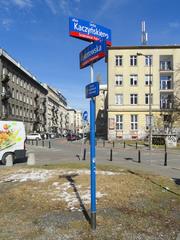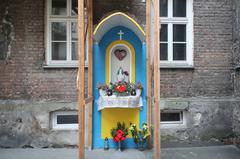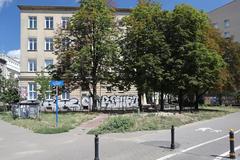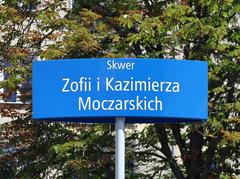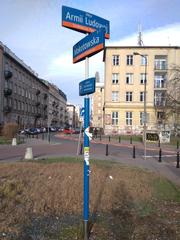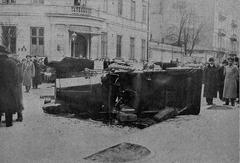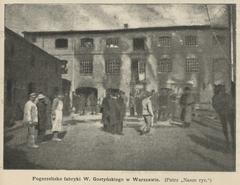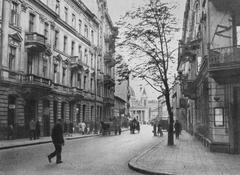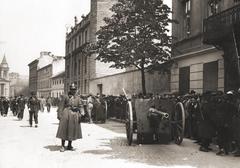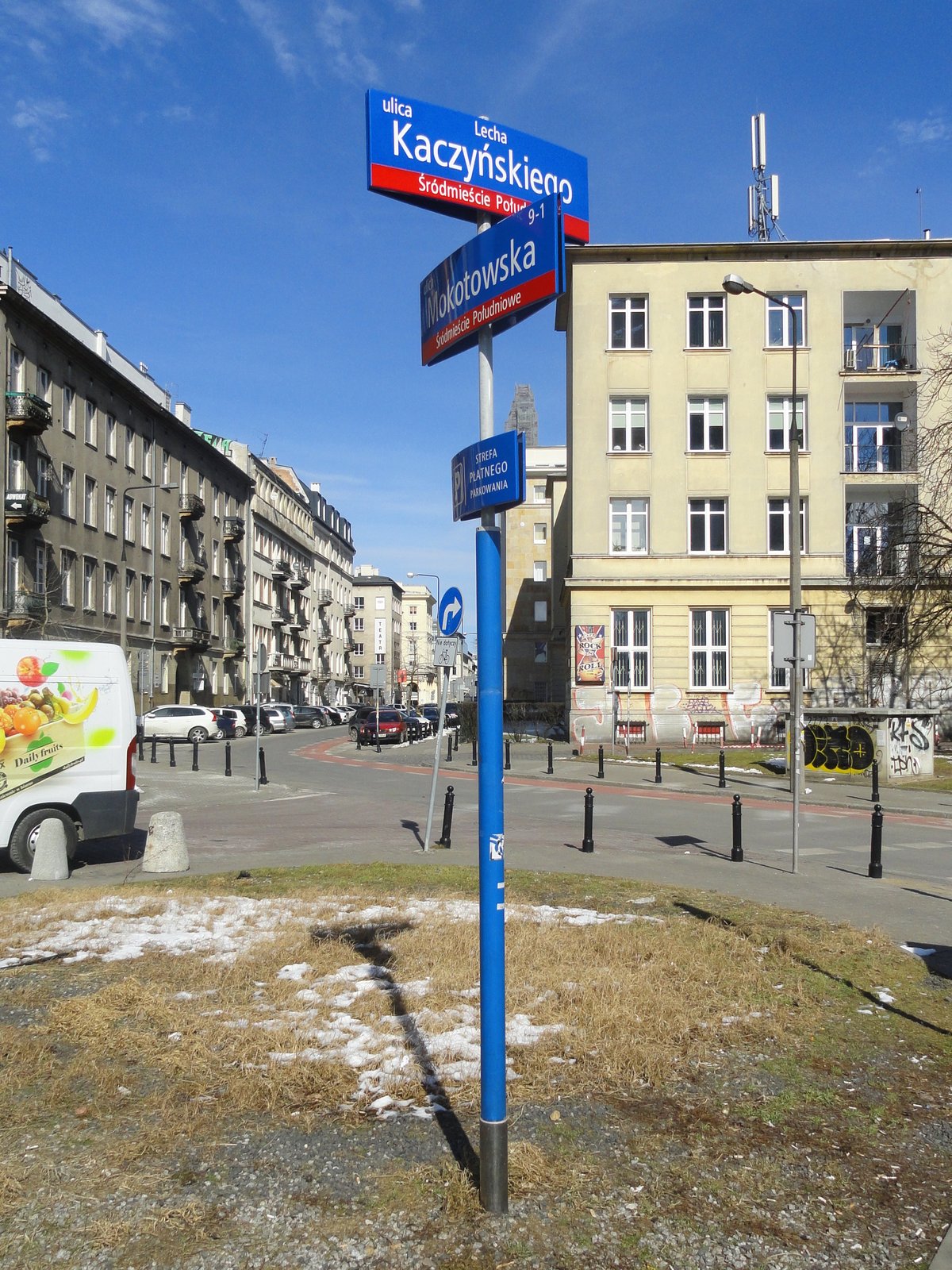
Mokotowska Street, Warsaw: Visiting Hours, Tickets, and Historical Sites Guide
Date: 15/06/2025
Introduction
Mokotowska Street stands as one of Warsaw’s most distinguished thoroughfares, seamlessly blending the city’s layered history, architectural splendor, and vibrant cultural life. Initially a rural route connecting central Warsaw with the suburb of Mokotów in the late 18th century, Mokotowska has evolved into a symbol of prestige, architectural diversity, and cosmopolitan flair. Today, it is celebrated not only for its ornate Art Nouveau tenements and modernist gems but also for its dynamic fashion boutiques, cafés, galleries, and proximity to some of Warsaw’s most notable landmarks.
This guide provides a comprehensive overview of Mokotowska Street’s historical and architectural evolution, essential visitor information including opening hours and ticket policies, travel tips, accessibility guidance, and highlights of its cultural and culinary offerings. Whether you’re an architecture enthusiast, history buff, or simply seeking to experience Warsaw’s urban charm, Mokotowska Street promises a captivating journey through Poland’s past and present.
For further reading, see resources like The Leaders Estate, WhiteMAD, and Like a Local Guide.
Historical Origins and Urban Development
Mokotowska Street’s roots date back to the late 18th and early 19th centuries, when it served as a connector between Warsaw’s city center and the rural village of Mokotów. The street’s transformation into a fashionable address accelerated in the late 19th century, as Warsaw’s population grew and the city expanded beyond its medieval boundaries. Trzech Krzyży Square anchors its northern end, linking the thoroughfare to both commercial and residential districts (The Leaders Estate).
By the early 20th century, Mokotowska was lined with grand tenement houses (kamienice) and elegant townhouses, many of which remain today—offering a rare glimpse into pre-war Warsaw.
Architectural Highlights
Eclecticism and Art Nouveau
Mokotowska is renowned for its eclectic architectural blend, with notable Art Nouveau masterpieces punctuating the street. Among its most celebrated buildings:
- Szymborski Townhouse (Intersection with Koszykowa Street): Built in 1902 by Juliusz Dzierżanowski, this four-story corner building features intricate stucco, sun motifs, and mascarons—quintessential Art Nouveau elements (WhiteMAD).
- Mokotowska 41: Designed in 1912 by Heppen-Czerwiński, this early modernist building includes distinctive Art Nouveau touches and a guardian angel sculpture.
- Mokotowska 57 (“Cracovians and Highlanders” Tenement): Distinguished by monumental sculptures of giants in Polish folk attire, celebrating national heritage (The Leaders Estate).
Modernism, Preservation, and Revival
The interwar period introduced modernist influences, with buildings featuring streamlined forms and luxurious interiors. Despite heavy fighting during the Warsaw Uprising of 1944, Mokotowska largely survived the devastation that befell much of the city. Post-war renovations simplified many decorative elements, but ongoing restoration projects—such as the 2018 revival of the Szymborski townhouse—have returned many façades to their original grandeur (WhiteMAD). Recent adaptations blend heritage with modern amenities, including rooftop terraces and underground parking (The Leaders Estate).
Visitor Information
Visiting Hours and Tickets
- Mokotowska Street: Public and open 24/7; no entrance fees for walking the street.
- Individual Venues: Most boutiques, galleries, and cafés operate from 10:00 AM to 8:00 PM. Some private buildings and galleries may require tickets or appointments.
Accessibility
- Pedestrian-Friendly: Wide sidewalks and pedestrian crossings accommodate wheelchairs and strollers, though some historic buildings may have limited access.
- Public Transport: Trams, buses, and the Politechnika metro station offer convenient access. Parking is limited but available in nearby garages.
Guided Tours
- Walking tours focusing on Mokotowska’s history and architecture are available, including options with professional guides or audio guides via apps such as Audiala.
Travel Tips
- Best Time to Visit: Spring and early autumn for optimal weather and lively street life.
- What to Wear: Comfortable walking shoes are recommended due to cobblestone sections.
- Photography: Key photo spots include the Szymborski townhouse, Mokotowska 41, and the “Cracovians and Highlanders” tenement.
Cultural and Social Scene
Fashion and Design
Mokotowska Street is Warsaw’s premier “fashion mile,” home to a concentration of high-end boutiques featuring Polish designers like Lidia Kalita, Bohoboco, and La Mania. The chic storefronts, set in restored historic buildings, attract both locals and visitors seeking luxury shopping and unique souvenirs (Fodor’s).
Culinary Landmarks
The street’s culinary scene ranges from traditional Polish milk bars to trendy cafés and artisanal ice cream parlors. Standout venues include:
- Bar Mleczny: Classic Polish dishes at affordable prices.
- Ciao e Tutti: Authentic Italian cuisine.
- Malinova and Jednorozec: Renowned for artisanal ice cream.
- Miau Café: Warsaw’s original cat café (Fodor’s).
Artistic and Community Life
Mokotowska’s charm is amplified by its art galleries, independent bookstores, and theaters such as the Współczesny Theatre and Luna Cinema. Seasonal cultural events, pop-up exhibitions, and festive street decorations infuse the street with creative energy.
Notable Landmarks and Points of Interest
- Polish History Museum (Mokotowska 33/35): Open Tuesday to Sunday, 10:00 AM–6:00 PM (closed Mondays). Tickets: ~20 PLN for adults, free entry on the first Sunday of each month. The museum, part of the Warsaw Citadel complex, features exhibitions, a concert hall, cinema, and panoramic viewing platform (ArchDaily).
- Boutique Cluster (Mokotowska 40–60): High-end Polish fashion boutiques.
- Malinova Ice Cream Parlor (Mokotowska 17): Beloved by locals for its unique flavors.
- Warsaw Citadel Complex: Includes the Polish Army Museum and Katyn Museum, forming a major cultural hub.
Green Spaces and Historic Details
Mature trees, historic gas lamps, and small parks contribute to Mokotowska’s tranquil ambiance. Architectural details—wrought-iron balconies, decorative cornices, and original entryways—provide a tangible link to Warsaw’s pre-war elegance (Like a Local Guide).
Frequently Asked Questions (FAQ)
Q: Is there a fee to visit Mokotowska Street?
A: No, it is a public street and free to explore.
Q: Are guided tours available in English?
A: Yes, various walking tours are offered in multiple languages.
Q: Is Mokotowska Street accessible for people with disabilities?
A: The street is accessible, though some historic buildings may have limited entry.
Q: Where can I park nearby?
A: Limited street parking is available; several parking garages are located nearby.
Q: What are the Polish History Museum’s opening hours and ticket prices?
A: Open Tuesday–Sunday, 10:00 AM–6:00 PM. Tickets: ~20 PLN for adults, with discounts and free entry on the first Sunday monthly (ArchDaily).
Visual Gallery and Interactive Elements
To enhance your visit, explore virtual tours and high-quality images featuring:
- “Mokotowska Street Warsaw historical buildings”
- “Szymborski Townhouse Art Nouveau façade”
- “Fashion boutiques on Mokotowska Street”
- “Polish History Museum exterior”
Interactive maps and digital guides can further enrich your experience.
Summary and Recommendations
Mokotowska Street stands as a testament to Warsaw’s resilience, blending pre-war architectural beauty with modern vibrancy. Its preserved tenements, cultural institutions, boutique shops, and culinary destinations offer a multi-layered experience for visitors. Accessibility and public transport make it easy to explore, and restoration efforts ensure its continued vitality.
For the best visit:
- Walk the street to admire Art Nouveau façades.
- Tour the Polish History Museum and neighboring Citadel complex.
- Sample local cuisine and browse unique boutiques.
- Use digital tools like the Audiala app for audio guides and updates.
- Visit during seasonal festivals for a lively atmosphere.
For more information, consult resources like Fodor’s and ArchDaily.
Official Sources and Further Information
- The Leaders Estate – Discovering Mokotowska Street
- WhiteMAD – The Szymborski Townhouse
- Like a Local Guide – Mokotowska Street Warsaw
- ArchDaily – Polish History Museum
- Fodor’s – 10 Reasons to Visit Mokotów
